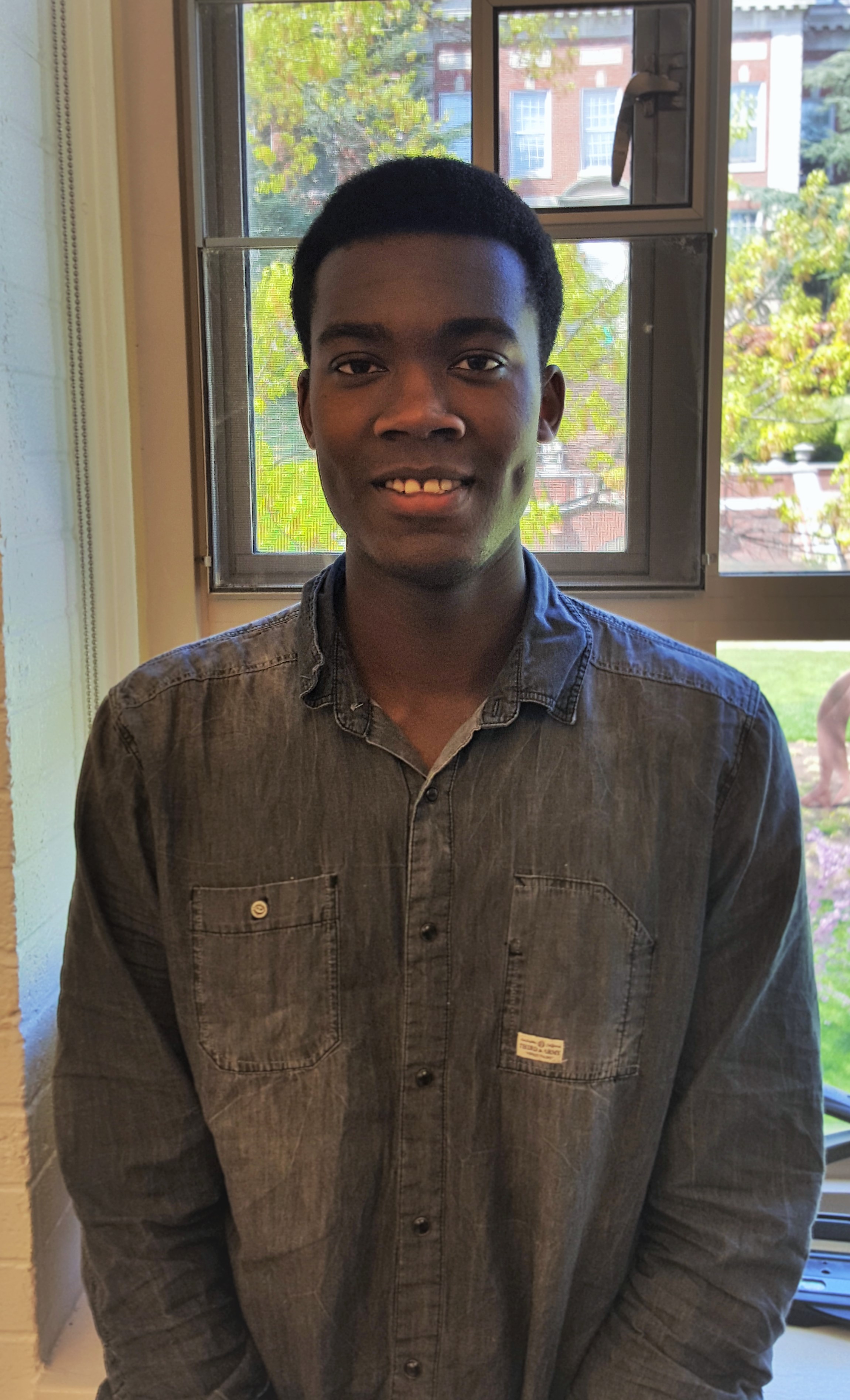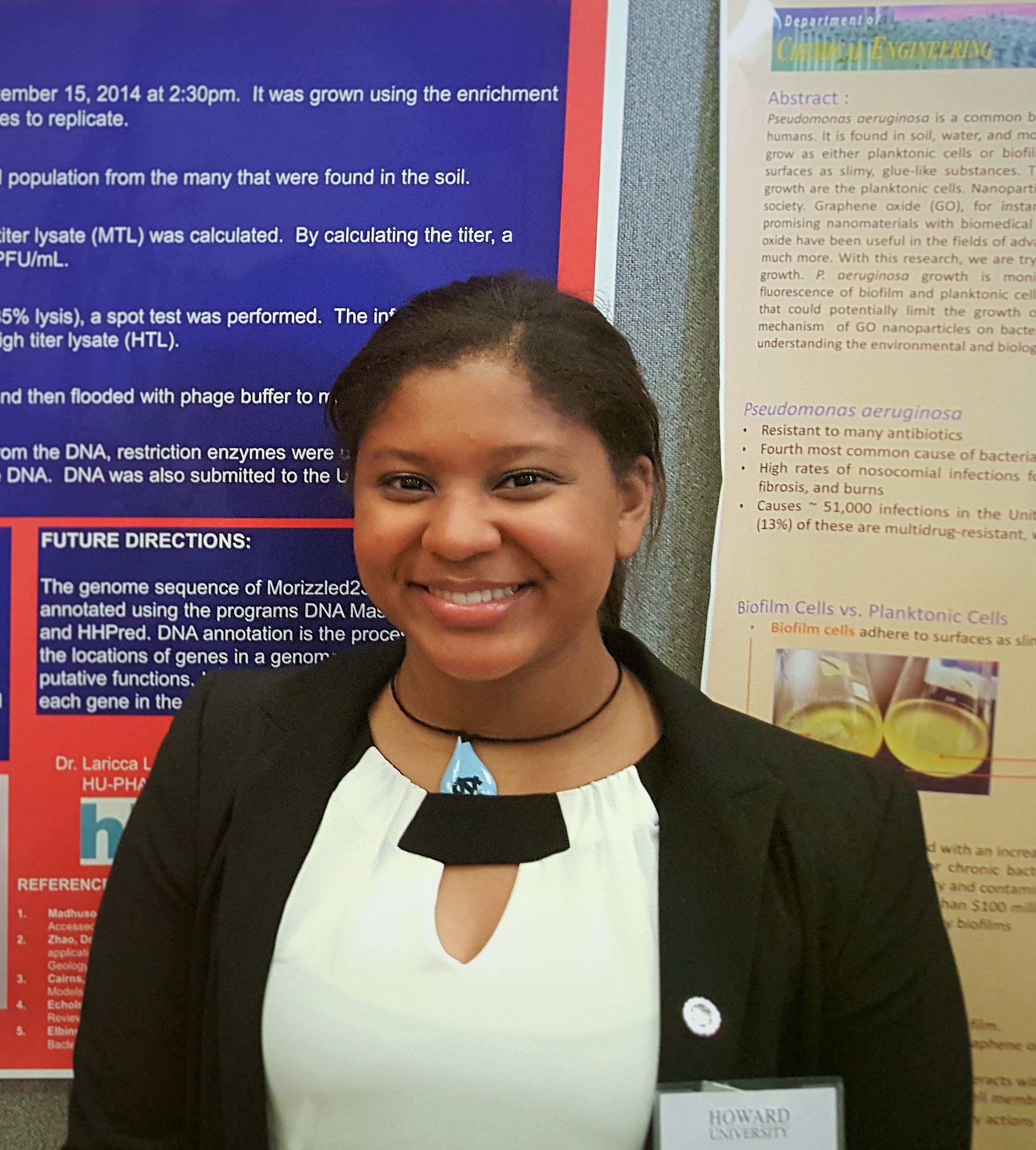Below is a summary of the abstract you submitted. Presenting author(s) is shown in bold.
If any changes need to be made, you can modify the abstract or change the authors.
You can also download a .docx version of this abstract.
If there are any problems, please email Dan at dar78@pitt.edu and he'll take care of them!
This abstract was last modified on April 24, 2015 at 2:24 p.m..

Students in the 2014-2015 PHAGES course at Howard University isolated 96 mycobacteriophages. Four genomes of these phages were sequenced using Illumina sequencing at the Pittsburgh Bacteriophage Institute: Morizzled23, HUTC2, Kwadwo, and Haleema. Morizzled23 was isolated by Morinne Osborne and is cluster C1 phage. This phage contains a genome that is 53.6Kb in length, has a G+C content of 64.6%, and contains 234 ORFs and 30 tRNAs. Preliminary BLASTn analyses indicated that Morizzled23 is most similar to phage Spud (99% similarity), which was isolated in Pittsburgh, PA in 2004. Phage HUTC2, is a cluster A11 phage and is most similar to phage Fibonacci (99%), which was isolated from West Lafayette, IN. HUTC2’s genome is 51.3Kb in size, contains 97 ORFs and one predicted tRNA. A cluster B1 phage, Kwadwo, was also isolated from the HU campus. Kwadwo, which was discovered by Kwadwo Assensoh, has a G+C content of 66.5% and contains 102 ORFs in its 68.3Kb genome. This phage is most similar to phage Sophia (99%), which was isolated from West Lafayette, IN. Rasheed Nawaz isolated phage Haleema, another cluster B1 phage. Similarly to Kwadwo, Haleema’s genome has a 66.5% G+C content, a length of 68.4Kb and 104 ORFs. Haleema was most similar to Xavier (99%), which was isolated from soil in St. Louis, MO. Recent studies have focused on finalizing the annotations of the four genomes and using PCR to determine the cluster affiliations of the 92 remaining phages.


